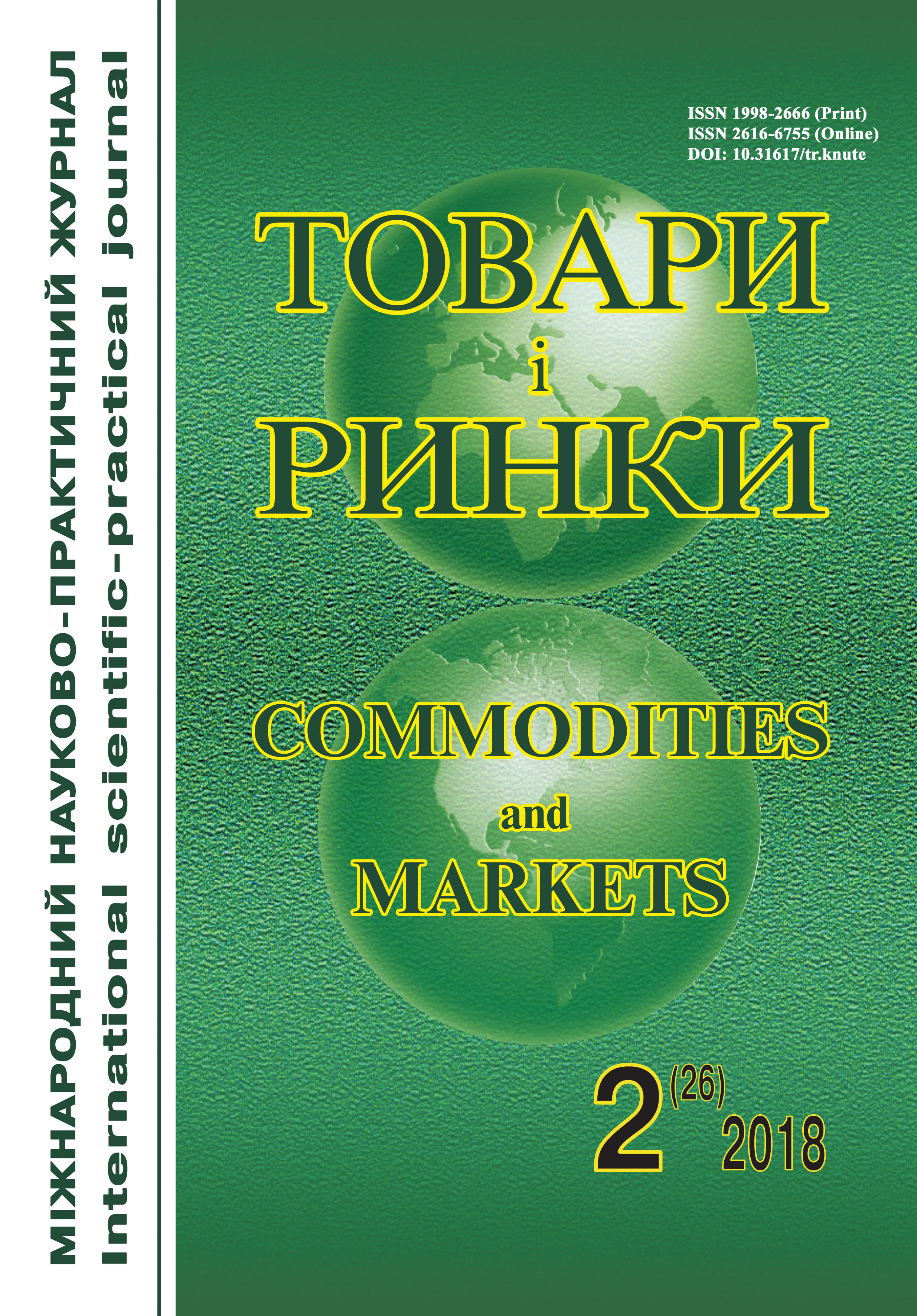Оptimization of paper composition for paper goods
Keywords:
paper, cellulose, mathematical model, optimization of composition, consumer propertiesAbstract
Background. A wide range of stationery products presented on domestic market and notebooks occupy the most important share. Indices of the properties of imported offset paper do not meet the requirements for writing paper, which has traditionally been used to make notebooks in Ukraine [1].
The development of paper with specified properties, which would meet modern requirements and would be competitive, is an urgent problem now. Today, improvement of the consumer properties of paper for stationery goods due to the search of optimal ratios of fibred semi-finished products is relevant.
Using the method of mathematical planning of the experiment makes it possible to obtain complete information on the dependence of these indicators of paper quality on the composition of paper mass at a minimum cost of materials and time.
This method also makes it possible to significantly increase the efficiency of the experiment and obtain mathematical models that are the basis for further optimization of the fibred composition of the paper.
Analysis of recent research and publications. The works of domestic scientists, O. Mokrousova, L. Andrievskaya, E. Kasyan, V. A. Osyka, L. A. Koptyukha [5–6] are devoted to questions of mathematical modelling and optimization of the composition of paper, depending on the technological parameters of the process of its production. However, the complexity of solving these problems leads to the need for research on the dependence of paper properties from the fibred composition through mathematical modelling.
The aim of the article is to develop a mathematical model for predicting the properties and optimizing the composition of paper for stationery products.
Material and methods. The object of research is a paper for stationery products. The modeling of physical and mechanical indicators of paper quality was conducted by the most efficiently for the development of mathematical models method of regression analysis. In this article are used the method and corresponding software Stat-Sens 6.0.
Results. In order to identify the optimal ratios of different types of cellulose for a given range of values of initial variables, multicriteria optimization was carried out. During the experiment, mixed factors were taken: q1 – sulfite coniferous cellulose; q2 – sulphate coniferous cellulose; q3 – sulfate leafy cellulose. Based on the specifics of the use of white goods, tests were conducted on the following indicators of paper quality: y1 – destructive effort on average from two directions; y2 – whiteness; y3 – opacity; y4 – surface integrity during unilateral wetting of water; y5 – smoothness.
Fischer’s criterion at checkpoints was used to validate models for adequacy. In order to identify the optimal ratios of different types of cellulose for a given range of values of initial variables, multicriteria optimization was carried out. The ternary graph with the designation of the compromise zone in the shaded area was constructed on the basis of adequate equations of the model of the dependence of the quality indexes of the paper on the ratio of different types of cellulose in the paper mass.
Conclusion. The research allowed to find the optimal ratio of sulfate leafy, sulphate coniferous and sulphite coniferous cellulose in the composition of paper for the manufacture of stationery goods. It has been established that the desired level of quality in terms of functional, ergonomic, aesthetic properties can be achieved with 30–35 % leafy cellulose content in relation to other fibrous components of the composition. The content of sulphate coniferous cellulose should be 45–50 %. In order to increase the economic efficiency of paper for school notebooks, the maximum permissible level of leafy sulfate cellulose content has been achieved while preserving the specified quality indices, namely: discontinuous effort on average from two directions, whiteness, opacity, surface water absorption during unilateral wetting and smoothness.
References
Glushkova T., Barabash S. Suchasni vymogy do jakosti vyrobiv iz paperu. Mizhnar. nauk.-prakt. zhurn. "Tovary i rynky". 2008. № 1. S. 121–126.
Glushkova T., Barabash S. Polipshennja vlastyvostej paperu dlja zoshytiv pry vykorystanni kompozycij voloknystyh napivfabrykativ. Mizhnar. nauk.-prakt. zhurn. "Tovary i rynky". 2008. № 2. S. 129–134.
Glushkova T., Barabash S. Doslidzhennja vplyvu voloknystyh napivfabrykativ na vlastyvosti paperu dlja zoshytiv. Mizhnar. nauk.-prakt. zhurn. "Tovary i rynky". 2009. № 1. S. 121–126.
Stretovych S. Vplyv napovnjuvacha na neprozorist' i bilist' paperu dlja pys'ma. Mizhnar. nauk.-prakt. zhurn. "Tovary i rynky". 2015. № 2 (20). S. 105–112.
Andrijevs'ka L., Mokrousova O., Kas'jan E. Modeljuvannja pokaznykiv jakosti paperu sanitarno-gigijenichnogo pryznachennja. Mizhnar. nauk.-prakt. zhurn. "Tovary i rynky". 2014. № 1 (17). S. 137–146.
Osyka V. A., Koptjuh L. A. Paperovi pakuval'ni materialy : monografija. Kyi'v : Kyi'v. nac. torg.- ekon. un-t, 2018. 464 s.
Statjuha G. O., Petran' A. G. Rozrobka komp’juternoi' systemy pidgotovky ta obrobky danyh u mezhah zastosuvannja eksperymental'no-statystychnoi' metodologii' dlja himiko-tehnologichnyh system. Naukovi Bicti NTUU "KPI". 2000. № 1. S. 100–106.
Statjuha G. O., Kolesnikova R. M., Petran' A. G. Modeljuvannja skladnyh fizykohimichnyh system – sumishej i kompozytiv. Metodychni vkazivky. Kyi'v : NTUU "KPI", 2000. 40 s.
Halafjan A .A. Statistica 6. Stat. analyz dannyh. M. : Bynom, 2007. 512 s.
Gabasov R. F., Kirillova F. M. Metody optimizacii. Minsk : Izd-vo Belorus. gos. un-ta, 1981. 350 s.
Poljak B. T. Vvedenie v optimizaciju. M. : Nauka, 1983. 384 s.
Ahnazarova S. L., Kafarov V. V. Metody optimizacii jeksperimenta v himicheskoj tehnologii. M. : Vyssh. shk., 1985. 327 s.



